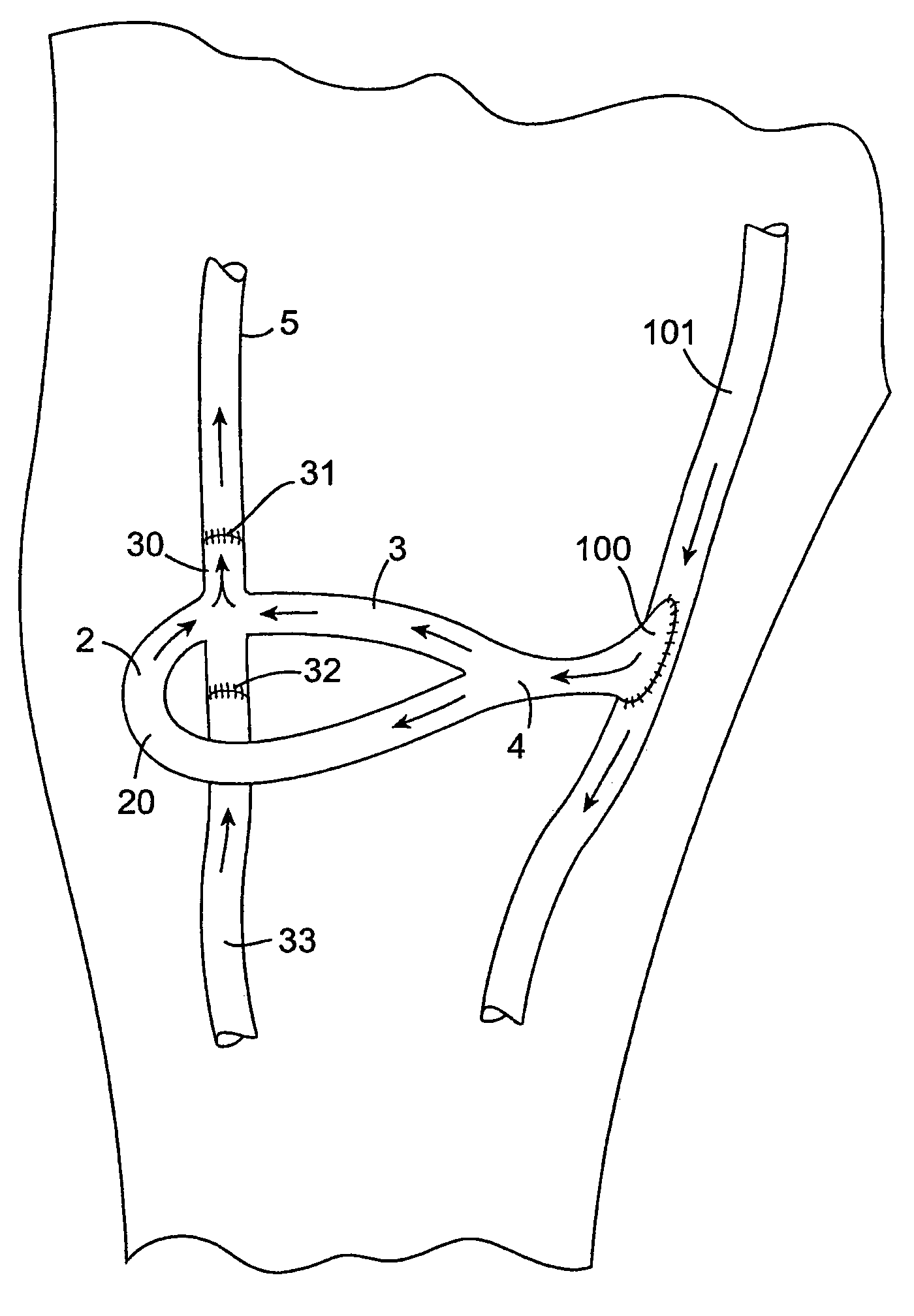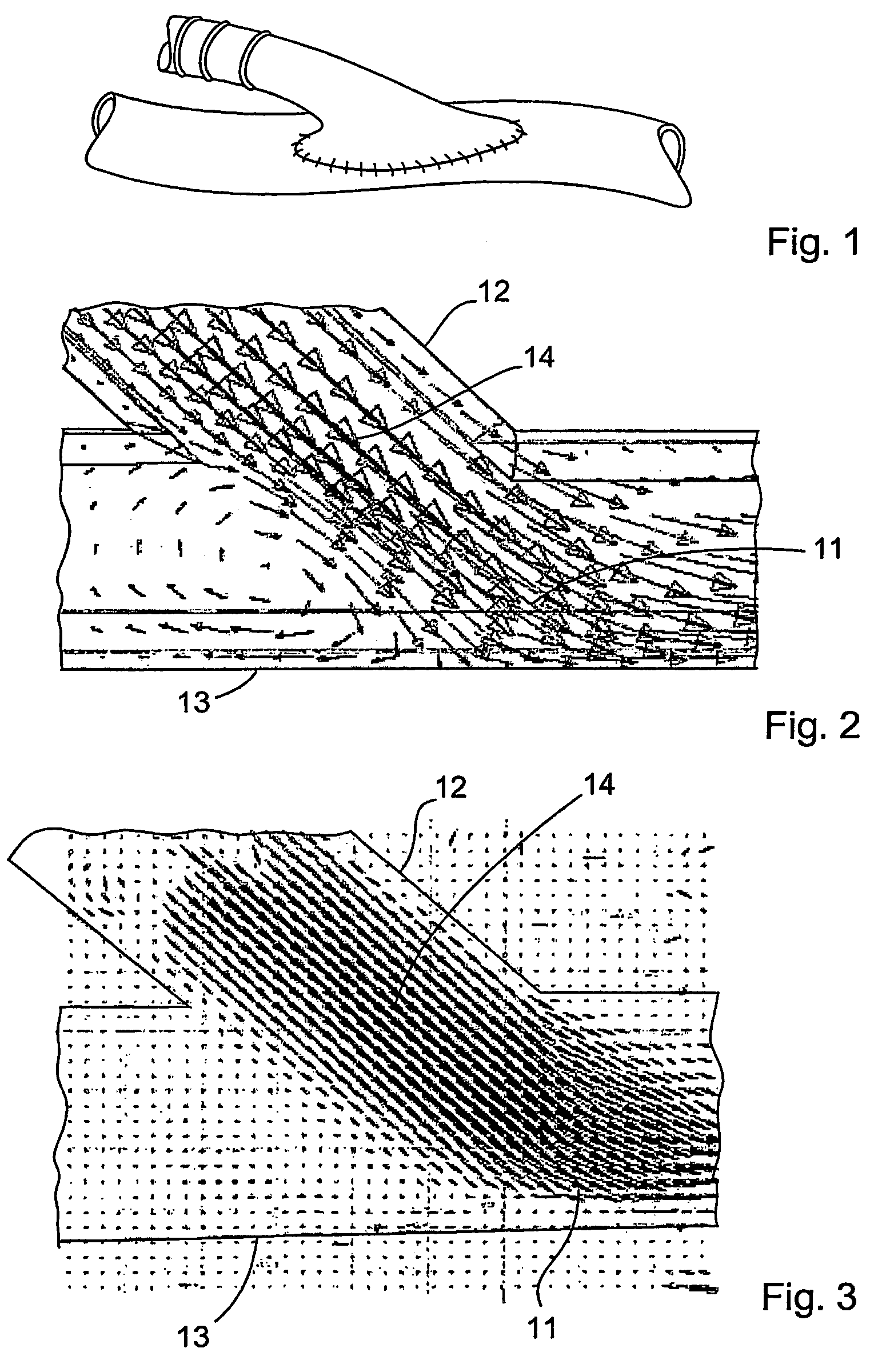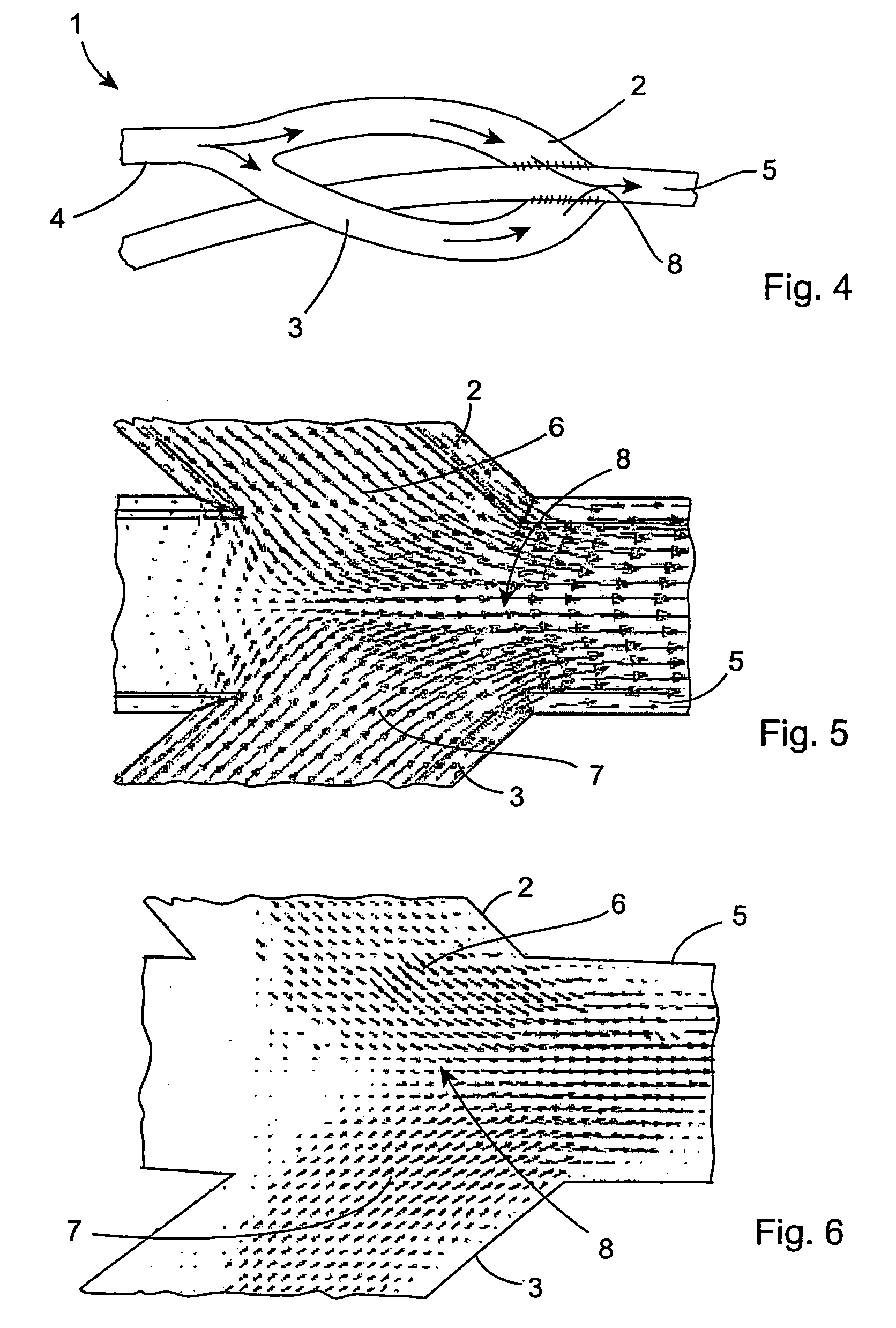Vascular graft
a vascular graft and graft technology, applied in the field of vascular grafts, can solve the problems of initiation of disease formation, moderate long-term patency rate of conventional vascular bypass procedures, etc., and achieve the effect of enhancing the impingement of the first branch and minimising the possibility of disease formation
- Summary
- Abstract
- Description
- Claims
- Application Information
AI Technical Summary
Benefits of technology
Problems solved by technology
Method used
Image
Examples
Embodiment Construction
[0044]Referring to the drawings, and initially to FIGS. 4 to 10 thereof, there is illustrated a vascular graft 1 according to the invention for directing blood flow between a first vasculature part and a second vasculature part 5.
[0045]The first vasculature part and the second vasculature part 5 may be parts of the same vascular vessel. In such a case, the graft 1 directs blood flow from an upstream part of a vascular vessel to a downstream part of the same vascular vessel.
[0046]Alternatively the first vasculature part and the second vasculature part 5 may be parts of different vascular vessels. In such a case, the graft 1 directs blood flow from an upstream part of one vascular vessel to a downstream part of a different vascular vessel.
[0047]The graft 1 comprises a proximal flow conduit 4 for directing blood flow from the first vasculature part to a first branch 2 and to a second branch 3. The first branch 2 directs the blood flow from the proximal flow conduit 4 to the second vasc...
PUM
 Login to View More
Login to View More Abstract
Description
Claims
Application Information
 Login to View More
Login to View More - R&D
- Intellectual Property
- Life Sciences
- Materials
- Tech Scout
- Unparalleled Data Quality
- Higher Quality Content
- 60% Fewer Hallucinations
Browse by: Latest US Patents, China's latest patents, Technical Efficacy Thesaurus, Application Domain, Technology Topic, Popular Technical Reports.
© 2025 PatSnap. All rights reserved.Legal|Privacy policy|Modern Slavery Act Transparency Statement|Sitemap|About US| Contact US: help@patsnap.com



